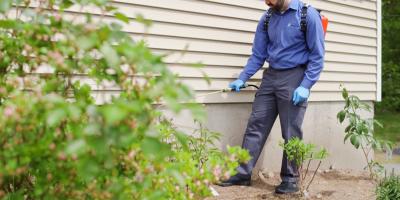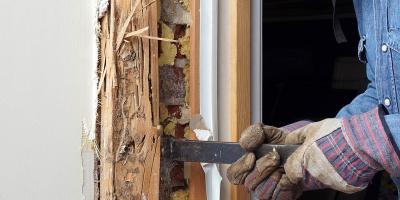How to Protect Artwork from Pests

Pest control may be an art, but pests are certainly not the kind of art appreciators you want in your home or gallery. That doesn’t, however, stop them from trying to take a closer look… or bite.
Mice, for example, will tear strips off a favorite print, then scurry off to the dark corners of your gallery to build their nests. Lady beetles will take up a winter residency, then stain your curated canvases a horrible yellow.
When you have invested time and money into artwork that you cherish, you can’t afford the problems that come along with destructive pests. Art may be an integral part of your business. Or you may display it to keep your home looking its best. Either way, if you’re not proactive in preventing pests from destroying your investment, the pests will get busy making a mess of your masterpieces.
Partnering with a pest control professional, particularly one invested in Integrated Pest Management (IPM) will help protect your portfolio for years to come.
Why You Should Prioritize Prevention
The only way to fully protect your art is to keep pests away completely. That’s where Integrated Pest Management -- or IPM -- comes into play. To avoid losing the lustre of your art pieces, you’ll have to stay vigilant. Luckily, IPM is not complicated, but it does require attention to detail and perseverance.
There are a few preventative IPM measures you can take that are specifically geared toward preserving art. You’ll want to dust your art frames regularly, for example; examining your art for holes and stains is another good place to start.
Of course, you’ll also want to keep a keen eye for any damage that does occur so it can be stopped before it gets much worse. In order to do that you’ll want to familiarize yourself with some of the art world’s biggest problem pests and the particular damage they can inflict.
The Philistines of the Pest Realm
Silverfish, in addition to being squirmy and unsettling, will eat anything containing starch. This means any sort of paper or glue, including paintings and prints. If something’s been taking bites out of your photographs, there’s a good chance it’s silverfish.
Almost all art is made with some combination of wood, paper or glue, which means that almost all art is a hungry cockroach’s dream come true. Cockroaches will create holes in paper and, more importantly (and more obviously), leave a trail of feces as their calling card.
Clothing moths are known for laying their eggs in closets and letting their larvae eat holes in your clothes, but do you know what’s made of a similar material to your shirts and pants? Canvas, like the kind that showcases a precious painting.
It doesn’t take long to destroy an original painting (or even a print) with hundreds of larvae tearing holes in it, one tiny bite at a time. Fortunately and just like in your closet, moth balls help deter clothing moths from paintings.
If your art is stored in a humid environment that’s susceptible to growing fungi, you’ll need to look out for book lice, which feed on fungus. They’re actually quite common in new houses, transplanted into the home on transported building materials. Thankfully, dehumidifiers do double duty of eliminating fungus and book lice.
While there are other pests that can damage your artwork, these are the usual suspects whenever you discover art damage. If art plays a major role in your life or business, the easiest way to protect it is to entrust your treasures to a pest control professional.
Don’t risk your art. Request a free quote for preventative pest management today.



